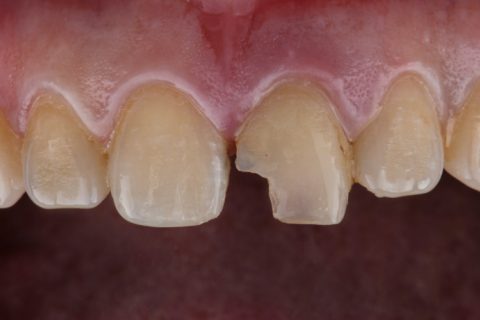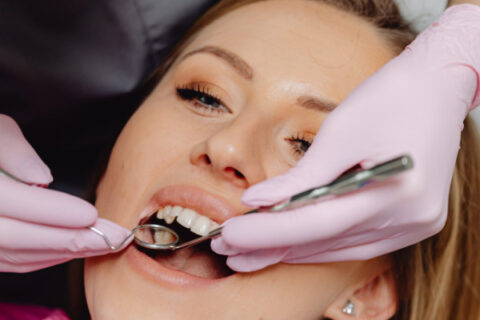How a Cosmetic Dentist May Fix Receding Gums
Receding gums are more than just a cosmetic concern—they can also signal underlying oral health issues that require timely attention. While cosmetic dentistry is often associated with enhancing the appearance of your smile, many cosmetic dentists are also trained in restorative techniques that address both function and form. Procedures such as gum grafting not only improve the look of your gums but also protect your teeth from further damage and sensitivity.
In this blog post, we’ll explore how cosmetic dentists address gum recession, what treatment options are available, and how these procedures can enhance both your oral health and your confidence.
Receding Gums: Causes, Treatment, Surgery, and More
Mild cases of gum recession may be managed with deep cleanings and behavior changes. Advanced cases often require surgical gum recession treatment, including: Connective tissue grafts, pinhole surgical technique and free gingival grafts.
Natural Ways to Support Gum Health: Home Remedies for Receding Gums
While professional care is essential, you can support your gums at home with:
- Saltwater rinses
- Green tea (anti-inflammatory)
- Vitamin C-rich foods
- Avoiding tobacco and alcohol
(Note: These support gum health but do not replace professional treatment.)
Gum Recession: Causes, Prevention, Surgery & Treatment
Gum recession occurs when the gum tissue surrounding the teeth wears away or pulls back, exposing more of the tooth or its root. This condition can lead to increased sensitivity, a higher risk of decay, and even tooth loss if left untreated. Common causes include aggressive brushing, periodontal disease, genetics, tobacco use, and poor oral hygiene.
While some mild cases of gum recession can be managed with non-surgical treatments—such as deep cleanings (scaling and root planing), desensitizing agents, or changes in oral care habits—more advanced recession often requires surgical intervention. Gum graft surgery, for instance, can restore lost tissue, protect exposed roots, and improve the appearance of your smile.
Gum Recession Treatment: What Are Your Options?
Depending on your case, gum recession treatment may include:
- Scaling and root planing (deep cleaning)
- Antibacterial mouth rinses
- Laser therapy
- Gum grafting surgery
- Regenerative procedures for bone and tissue loss
Say Goodbye to Receding Gums: Effective Treatment Options
Receding gums can impact both your oral health and the confidence you feel when you smile—but the good news is that effective treatment options are available. The sooner you address gum recession, the better your chances of preventing further damage and restoring a healthy gum line.
Timely treatment can help halt the progression of gum loss, reduce tooth sensitivity, and protect the vulnerable roots of your teeth from decay. In addition to the health benefits, treating receding gums can also dramatically improve the appearance of your smile by creating a more balanced and youthful look.
Can You Fix Receding Gums?
Yes—with the right gum recession treatment, it’s possible to restore gum coverage, reduce sensitivity, and improve your smile. While gums don’t grow back naturally, grafting and surgical procedures can replace lost tissue.
Conclusion
Gum recession may start subtly, but its long-term effects on your oral health and appearance can be significant if left untreated. Fortunately, advancements in cosmetic and restorative dentistry offer highly effective solutions to reverse or minimize the impact. Whether you’re dealing with minor gum thinning or a more advanced recession, seeking professional care is the first step toward protecting your teeth and enhancing your smile.
At McKinley Family Dental, we don’t just treat the symptoms—we address the root cause. Our personalized approach ensures you receive the most effective, comfortable, and aesthetically pleasing treatment possible. If you’ve noticed signs of receding gums, don’t wait. Early intervention can make all the difference in restoring both your confidence and your oral health.
Schedule your consultation today at McKinley Family Dental and discover how we can help you smile brighter, healthier, and pain-free.
Frequently Asked Questions
Q: What are the early signs of gum recession?
A: Early signs may include tooth sensitivity (especially to hot or cold), teeth that appear longer than usual, or notches near the gum line. You might also notice bleeding when brushing or flossing.
Q: Can receding gums grow back on their own?
A: Unfortunately, no—once gum tissue is lost, it doesn’t regenerate naturally. However, treatments like gum grafting can restore the appearance and function of the gum line.
Q: Is gum graft surgery painful?
A: Gum graft surgery is performed under local anesthesia and is typically well-tolerated. Some post-operative discomfort is normal but manageable with over-the-counter pain relief and proper aftercare.
Q: Are there non-surgical treatments for mild gum recession?
A: Yes. For less severe cases, deep cleaning procedures (scaling and root planing), improved oral hygiene, and desensitizing treatments may be enough to manage the condition and prevent progression.
Q: How long does it take to recover from gum graft surgery?
A: Most patients begin to feel better within a few days, with full healing taking one to two weeks. Our team will provide detailed post-op instructions to ensure a smooth and comfortable recovery.


